Alarming situation with degradation of Tatra mountain biosphere reserve was presented at the conference „Protected Areas – Cornerstones of Ecological Connectivity in the Carpathians and Beyond“
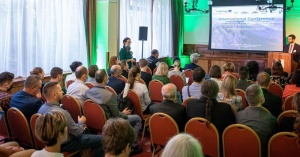 The conference „Protected Areas – Cornerstones of Ecological Connectivity in the Carpathians and Beyond“ was held on 28-30 September 2021 in Visegrád, Hungary. The conference was organised by the Secretariat of the Carpathian Convention, the Carpathian Network of Protected Areas (CNPA) Steering Committee, WWF, CEEweb and Eurac Research.
The conference „Protected Areas – Cornerstones of Ecological Connectivity in the Carpathians and Beyond“ was held on 28-30 September 2021 in Visegrád, Hungary. The conference was organised by the Secretariat of the Carpathian Convention, the Carpathian Network of Protected Areas (CNPA) Steering Committee, WWF, CEEweb and Eurac Research.
The three days event was a part of the ConnectGREEN Project “Restoring and Managing Ecological Corridors in Mountains as the Green Infrastructure in the Danube Basin” funded by European Union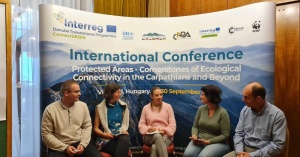 Funds through the Interreg Danube Transnational Programme (www.interreg-danube.eu/connectgreen). The Danube-Carpathian region is one of Europe´s last remaining strongholds for the large carnivore species: gray wolf, Eurasian lynx and brown bear, protected under EU law. Unfortunately, the planned infrastructure developments threaten to cut through the movement corridors of large carnivores and increase the fragmentation of their habitats. This situation is also highly topical for High Tatras region where unique natural heritage is short-sightedly degraded, a lot of ecological corridors could be lost in nearest future in the process of new massive construction of private infrastructure.
Funds through the Interreg Danube Transnational Programme (www.interreg-danube.eu/connectgreen). The Danube-Carpathian region is one of Europe´s last remaining strongholds for the large carnivore species: gray wolf, Eurasian lynx and brown bear, protected under EU law. Unfortunately, the planned infrastructure developments threaten to cut through the movement corridors of large carnivores and increase the fragmentation of their habitats. This situation is also highly topical for High Tatras region where unique natural heritage is short-sightedly degraded, a lot of ecological corridors could be lost in nearest future in the process of new massive construction of private infrastructure.
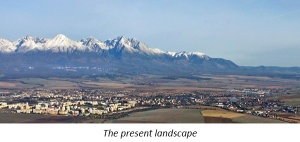
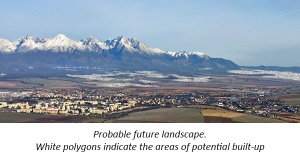
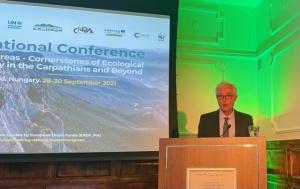 Harald Egerer (The Head of Secretary of the Carpathian Convention) emphasized that Protected areas are good for nature – but they’re also good for us, our health, and our resilience. Harald Egerer takes us through the history of the #CarpathianConvention in Central and Eastern Europe.
Harald Egerer (The Head of Secretary of the Carpathian Convention) emphasized that Protected areas are good for nature – but they’re also good for us, our health, and our resilience. Harald Egerer takes us through the history of the #CarpathianConvention in Central and Eastern Europe.
Miklós Marton (Steering Group Member of the EU Danube Region Strategy, Priority Area 6 – Biodiversity, Landscapes and Quality of Air and Soils) emphasized that in order to restore ecological relations, we need to build stronger links with several other sectors. Such is the case with tourism, as active tourism also prefers the more valuable natural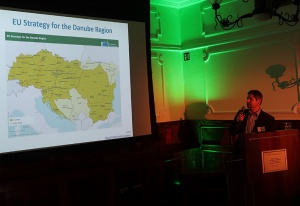 places: banks of rivers, valleys and mountain ranges. It is not enough to link protected areas, but it is also important to convince different sectors.
places: banks of rivers, valleys and mountain ranges. It is not enough to link protected areas, but it is also important to convince different sectors.
Zuzana Okaniková (State Nature Conservancy of the Slovak Republic) presented a methodology for identification of ecological corridors in the Carpathian countries by using large carnivores as umbrella species. She argued: “What we need to safeguard connectivity is political will, and governmental support to address protection issues”.
Milan Husàr (Spectra CE) gave a comprehensive and insightful overview of harmonising spatial planning with conservation in order to reduce eco-corridor conflicts and explained how available legal and financial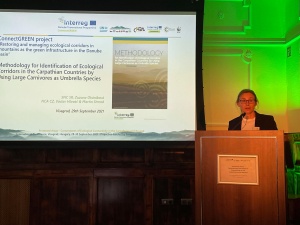 instruments allow us to do this. Rastislav Stanik (Slovak Environmental Agency) made very interesting presentation “Integration of Ecological Corridors into Spatial Planning by implementing the outputs from the ConnectGREEN project”. In reaction, most of the participants agreed that the most difficult thing is to apply the ConnectGreen methodology in practice when stakeholders (for example, developers or politics) have their own plans.
instruments allow us to do this. Rastislav Stanik (Slovak Environmental Agency) made very interesting presentation “Integration of Ecological Corridors into Spatial Planning by implementing the outputs from the ConnectGREEN project”. In reaction, most of the participants agreed that the most difficult thing is to apply the ConnectGreen methodology in practice when stakeholders (for example, developers or politics) have their own plans.
During the Connectivity academy session, Svetlana Belova (Machaon International) informed about a very alarming situation in the Tatra mountain biosphere reserve with an unbridled urban development in the entire Tatra region fuelled by profit-seeking speculations not taking the needs of local communities and environmental effects into consideration. 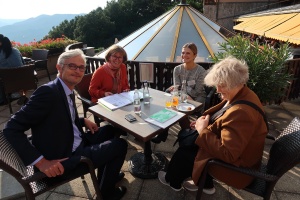 According to estimates made by local conservationists, one third of the buffer zone of the Tatra National Park is already designated in valid urban plans for new construction of apartment estates and recreation facilities. This means that at least 1/3 of the most important ecosystem functions and services in this zone will be lost. Developers and investors do not take into account social factors and create ghost towns pushing local young people away from the region as they cannot afford housing at the exorbitant price and at the same time ecological stability and human well-being for those who stay are slowly destroyed.
According to estimates made by local conservationists, one third of the buffer zone of the Tatra National Park is already designated in valid urban plans for new construction of apartment estates and recreation facilities. This means that at least 1/3 of the most important ecosystem functions and services in this zone will be lost. Developers and investors do not take into account social factors and create ghost towns pushing local young people away from the region as they cannot afford housing at the exorbitant price and at the same time ecological stability and human well-being for those who stay are slowly destroyed.
Dr. Gabriella Nagy (CEE-web for biodiversity) summed up the main message of the session: “The topic of environmental protection is sensitive. It is not only a structural issue but also a political one and we must decide now on which level we want to protect nature for future generations”.
 The last session of the day and the entire event was dedicated to the presentation of a Conference Declaration. After an open discussion based on which some amendments were made, the Conference Declaration was officially adopted by the participants.
The last session of the day and the entire event was dedicated to the presentation of a Conference Declaration. After an open discussion based on which some amendments were made, the Conference Declaration was officially adopted by the participants.
The Conference was called to an ceremonious end by Cristian-Remus Papp, WWF Romania, and Harald Egerer, Head of the UNEP Vienna Programme Office, Secretariat of the Carpathian Convention.
Presentation you could find below, article is here
Posted by Svetlana Belova, October 6, 2021. Photos by CEE web


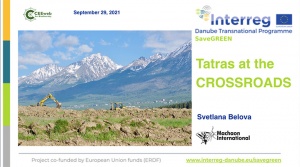
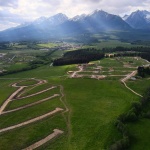 Previous Post
Previous Post Next Post
Next Post